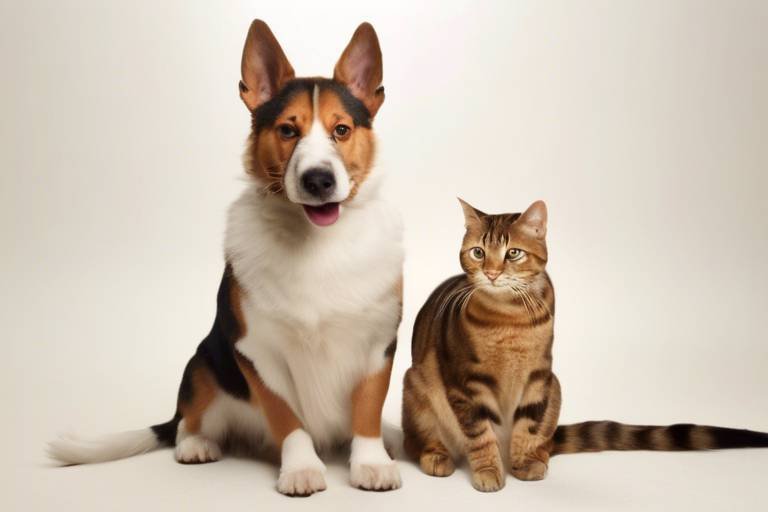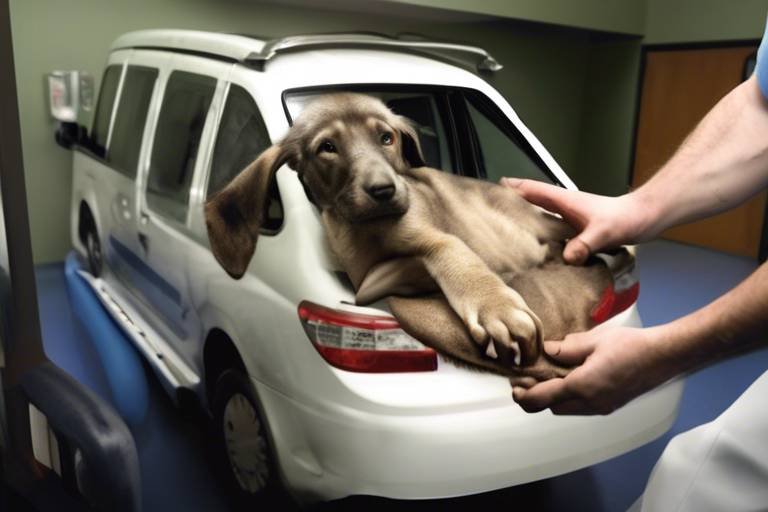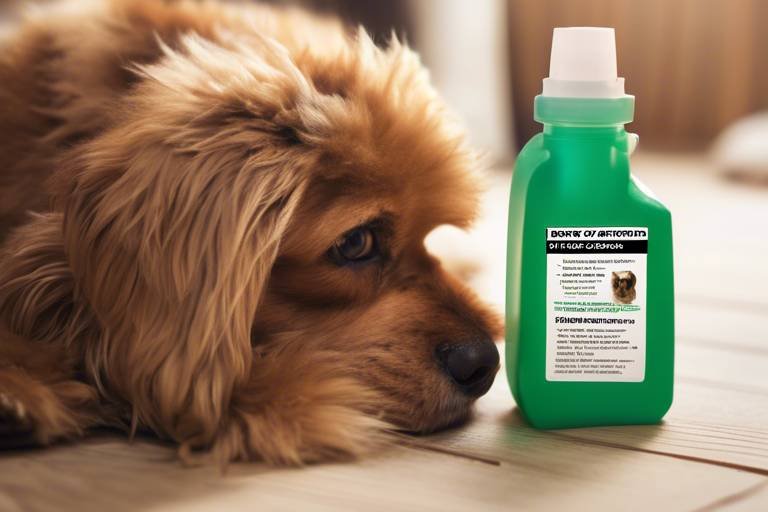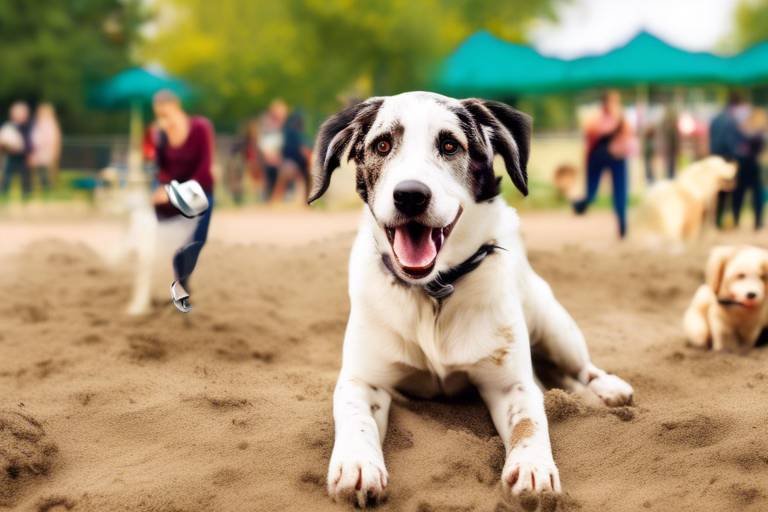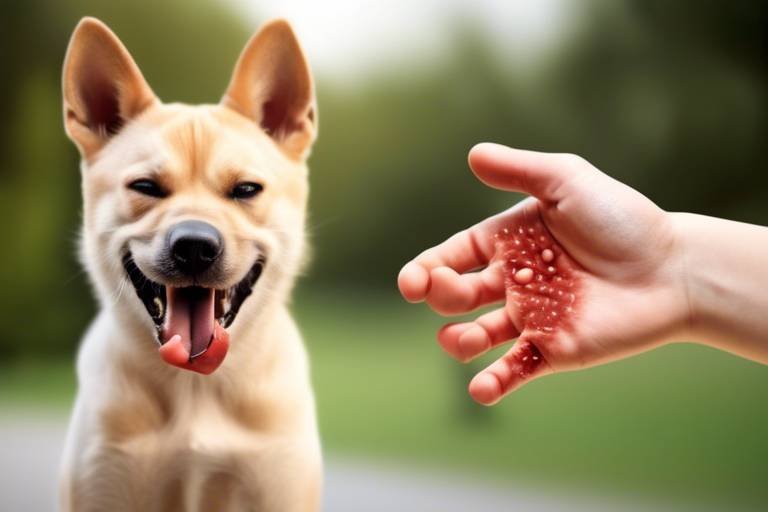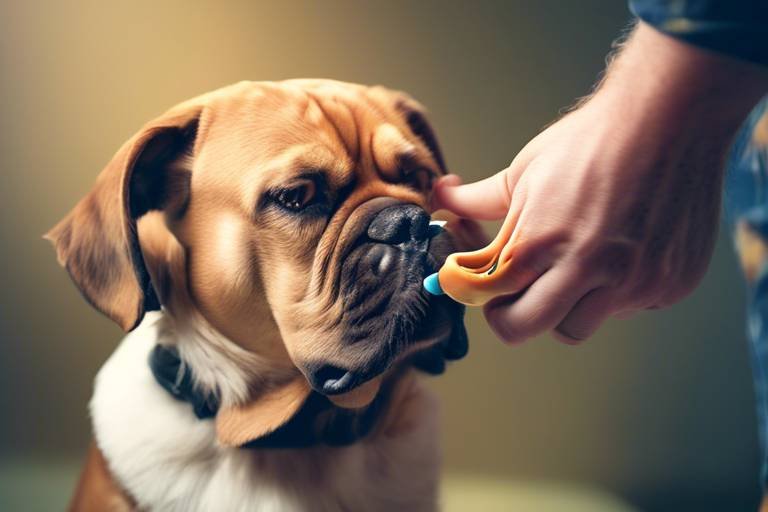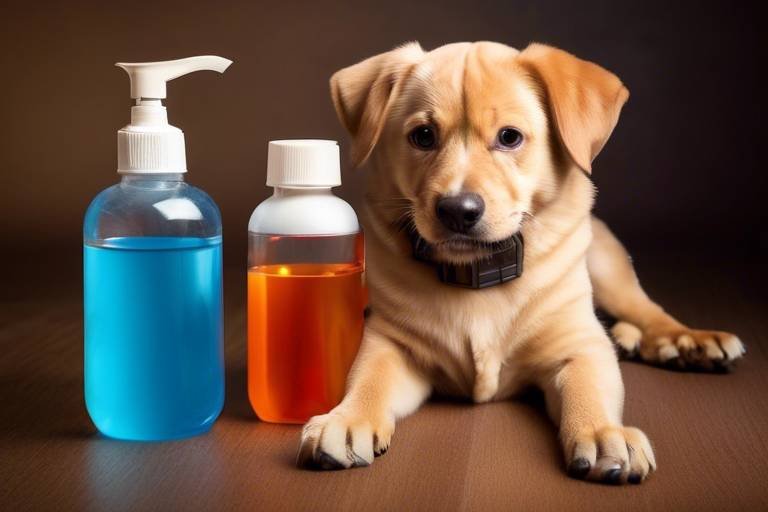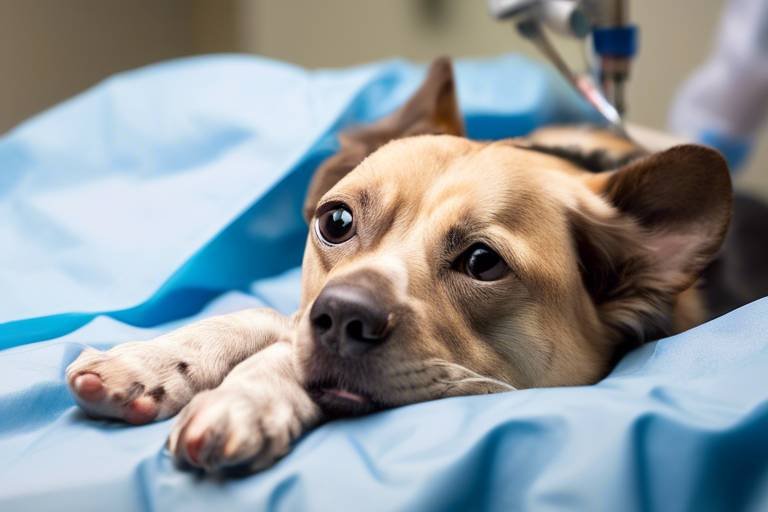What to Do If Your Pet Swallows a Foreign Object
As a pet owner, there’s nothing more alarming than realizing that your furry friend has swallowed something they shouldn’t have. Whether it’s a chew toy, a piece of string, or even a household item, the anxiety can be overwhelming. But worry not! This article provides essential steps and guidance for pet owners on how to respond if their pet ingests a foreign object, ensuring their safety and well-being. Remember, your quick actions can make all the difference when it comes to your pet’s health. So, let’s dive into what you need to know!
Understanding the symptoms that indicate your pet has swallowed a foreign object is crucial for timely intervention. You might notice your pet acting strangely, and it’s important to pay attention to these signs. Common symptoms include:
- Vomiting: This can be a clear sign that something is wrong.
- Lethargy: If your usually energetic pet seems tired and uninterested, take note.
- Changes in Appetite: A sudden refusal to eat can indicate distress.
These symptoms can vary between pets, so always trust your instincts. If something feels off, it’s better to be safe than sorry!
Knowing what to do right after you suspect your pet has ingested something harmful can make a significant difference. First and foremost, stay calm. Your pet can sense your anxiety, and remaining composed will help you think clearly. Assess the situation: what did your pet eat? How long ago did it happen? This information will be crucial when you consult a veterinarian.
Inducing vomiting can be a viable option in some cases. However, it’s not always the right choice. If your pet has ingested a non-sharp object and it’s been less than two hours, it may be safe to induce vomiting. But how do you do it safely? Here are some guidelines:
One of the most common methods for inducing vomiting in pets is using 3% hydrogen peroxide. The general recommendation is:
| Pet Size | Dosage |
|---|---|
| Small dogs (< 10 lbs) | 1 teaspoon |
| Medium dogs (10-30 lbs) | 2 teaspoons |
| Large dogs (> 30 lbs) | 1 tablespoon |
Always consult your veterinarian before attempting this method to ensure it’s safe for your specific pet.
It’s crucial to understand the scenarios where inducing vomiting could be dangerous. For instance, if your pet has swallowed sharp objects (like bones or glass) or caustic substances (like cleaning products), inducing vomiting could cause more harm than good. In these cases, immediate veterinary care is essential.
Knowing when to seek professional help is vital. If your pet shows severe symptoms or if you’re unsure about the type of object ingested, don’t hesitate to contact your veterinarian. They can provide the necessary care and interventions that may not be possible at home. Remember, it’s always better to err on the side of caution when it comes to your beloved pet’s health.
Veterinary diagnostics often include X-rays or ultrasounds to determine the location and type of foreign object. Understanding these procedures can help you prepare for your vet visit. Your vet may recommend one or both of these tests depending on the situation. Knowing what to expect can alleviate some of the stress during this worrying time.
Familiarize yourself with the types of objects that pets commonly ingest. Here are some frequent offenders:
- Toys (especially small parts)
- Strings and ribbons
- Household items (like socks and batteries)
By understanding these risks, you can better safeguard your home and prevent future incidents.
Taking steps to prevent your pet from swallowing foreign objects is essential. Here are some strategies:
- Training: Teach your pet commands like “leave it” to discourage them from picking up harmful items.
- Supervision: Keep a close eye on your pet, especially during playtime.
- Safe Toy Selection: Choose toys that are appropriate for your pet's size and chewing habits.
With a little effort, you can significantly reduce the chances of a foreign object incident occurring.
Q: What should I do if my pet is choking?
A: If your pet is choking, try to remain calm and assess the situation. If you can see the object, try to remove it carefully. If not, you may need to perform the Heimlich maneuver or seek immediate veterinary assistance.
Q: How can I tell if my pet is in pain?
A: Signs of pain in pets can include whimpering, panting, restlessness, or changes in behavior. If you suspect pain, consult your veterinarian immediately.
Q: Can I give my pet anything to help them pass the object?
A: It’s best to consult with your veterinarian before giving your pet any medication or home remedies, as some substances can be harmful.

Recognizing the Signs of Ingestion
When it comes to our furry companions, being vigilant can mean the difference between a minor scare and a serious health crisis. Understanding the symptoms that indicate your pet has swallowed a foreign object is crucial for timely intervention. Pets, especially curious dogs and cats, can be notorious for getting into things they shouldn’t. You might wonder, what exactly should I be looking for? Well, here are some key signs to keep an eye on:
- Vomiting: If your pet starts vomiting, it could be their body’s way of trying to expel something harmful. Pay attention to the frequency and the appearance of the vomit.
- Lethargy: A sudden change in energy levels, such as your pet becoming unusually tired or inactive, can indicate distress.
- Changes in Appetite: If your pet suddenly refuses to eat or shows signs of discomfort while eating, it might be a sign that something is wrong.
- Abdominal Pain: Look for signs of discomfort, such as whining, pacing, or a tense abdomen. If they seem to be in pain, it’s time to take action.
- Diarrhea: Changes in stool consistency or frequency can also be a sign that your pet has ingested something they shouldn’t have.
Additionally, you may notice your pet exhibiting unusual behaviors, such as excessive drooling or trying to hide. These behaviors can be subtle but are often indicators of distress. It’s also important to remember that some pets may not show symptoms immediately. In some cases, it may take hours or even days for signs to manifest. Therefore, if you suspect your pet has ingested a foreign object, it’s better to err on the side of caution.
So, what should you do if you notice any of these signs? First and foremost, stay calm. Panicking won’t help your pet, and it may cloud your judgment. Assess the situation carefully, and if you suspect ingestion, consider the object they might have swallowed. Was it something small, like a toy or a piece of string? Or was it something larger or potentially harmful? This information will be crucial when you consult a veterinarian.
In summary, being aware of the signs of foreign object ingestion can help you respond quickly and effectively. Remember, your pet relies on you for their safety, so keeping a watchful eye on their behavior and health is essential. If you ever find yourself in doubt, don’t hesitate to reach out to a veterinary professional for guidance.
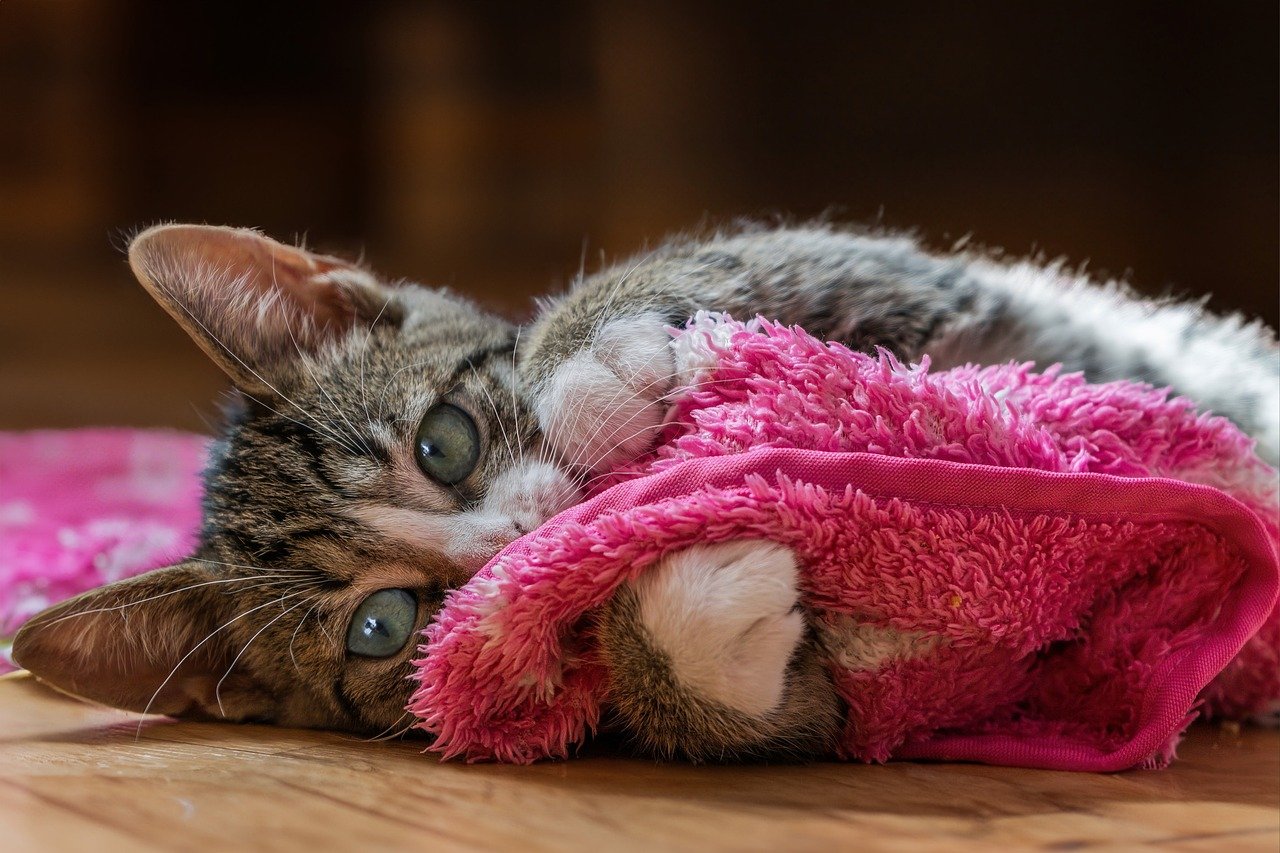
Immediate Actions to Take
When you suspect that your beloved pet has swallowed a foreign object, the first thing to remember is to stay calm. Your pet can sense your anxiety, which might only add to their distress. Take a deep breath and assess the situation carefully. The steps you take in these crucial moments can significantly impact your pet’s health and safety. Here’s what you should do:
Begin by observing your pet for any signs of distress. Look for symptoms such as vomiting, excessive drooling, or any changes in behavior. If your pet seems lethargic or is showing signs of pain, it’s time to act quickly. In some cases, you might notice them trying to cough or gag, which could indicate that something is lodged in their throat. Pay close attention to these signals, as they can guide your next steps.
Next, it’s essential to determine the nature of the object ingested. Was it a toy, a piece of clothing, or something potentially toxic? This information will be crucial when you consult your veterinarian. If you can, try to identify when and how your pet might have ingested the object. This can help you provide valuable context to your vet, making it easier for them to assess the situation.
In some cases, you may be able to induce vomiting, but this should only be done under specific circumstances. If the object is something that can be safely expelled, such as a soft toy or food item, you might consider this option. However, never attempt to induce vomiting if your pet has swallowed something sharp, caustic, or if they are unconscious or having seizures. In these scenarios, immediate veterinary care is essential.
When inducing vomiting is deemed safe, you can use hydrogen peroxide as a common method. The general guideline is to administer 1 teaspoon of 3% hydrogen peroxide per 10 pounds of your pet's weight, but never exceed 3 tablespoons. After giving the hydrogen peroxide, keep an eye on your pet for about 15 minutes. If they haven’t vomited by then, do not give them another dose and seek veterinary help immediately.
It’s important to note that time is of the essence. The sooner you act, the better the chances of a positive outcome. If you’re uncertain at any point, don’t hesitate to reach out to your veterinarian for guidance. They can provide tailored advice based on your pet’s specific situation. Remember, while it’s great to have some knowledge on hand, nothing beats the expertise of a trained professional.
Finally, make sure to keep your pet as comfortable as possible while you prepare for a potential trip to the vet. Keep them calm and avoid any unnecessary movement. If you need to transport them, use a carrier or a secure leash to prevent any further injury. Your quick and decisive actions can make all the difference in ensuring your furry friend gets the help they need!
- What should I do if my pet is choking?
If your pet is choking, try to remain calm. You can perform the Heimlich maneuver for pets or take them to a vet immediately. - How can I prevent my pet from swallowing foreign objects?
Supervise your pet during playtime and choose safe, appropriate toys to minimize risks. - What are the signs that my pet needs to see a vet?
Signs include persistent vomiting, lethargy, pain, or any unusual behavior following ingestion of a foreign object.
When to Induce Vomiting
Inducing vomiting in pets can be a lifesaving measure, but it’s essential to know when it’s appropriate to do so. If you suspect that your furry friend has swallowed something harmful, your first instinct might be to make them throw it up. However, this isn't always the best course of action. You need to assess the situation carefully. For instance, if your pet has ingested a non-sharp object and it's been less than two hours since ingestion, inducing vomiting could be beneficial. But remember, timing is everything!
Here are some critical points to consider before deciding to induce vomiting:
- Type of Object: If the object is a soft item like a piece of fabric or a rubber toy, inducing vomiting might help. However, sharp objects can cause serious damage to the esophagus or stomach lining if they are brought back up.
- Substance Ingested: If your pet has swallowed a caustic substance, such as bleach or drain cleaner, inducing vomiting can do more harm than good. In these cases, immediate veterinary care is crucial.
- Time Factor: The sooner you act, the better. If it’s been more than two hours since your pet ingested the foreign object, inducing vomiting may not be effective.
- Pet's Health: Always consider your pet's overall health. If they are already showing signs of distress or if they have underlying health issues, inducing vomiting may not be safe.
In summary, while inducing vomiting can be a useful tool in certain situations, it’s not a one-size-fits-all solution. Always err on the side of caution and consult with your veterinarian if you’re unsure. They can provide tailored advice based on your pet’s specific circumstances.
Safe Induction Techniques
When it comes to inducing vomiting in your pet, safety is the name of the game. You want to ensure that you’re doing it correctly to avoid causing more harm than good. One of the most common methods is using hydrogen peroxide, which can be effective in prompting your pet to expel the ingested object. However, it’s crucial to follow the right dosage based on your pet's weight. Typically, the recommended amount is about 1 teaspoon (5 ml) per 10 pounds of body weight, but you should never exceed 3 tablespoons in total for dogs. For cats, the dosage is often less, so always double-check the specifics for your furry friend.
Before you begin, ensure that your pet is alert and not showing signs of distress. If your pet is unconscious or having seizures, inducing vomiting could be dangerous, and you should seek veterinary help immediately. If your pet has ingested something that is potentially caustic, like bleach or other cleaning products, do not induce vomiting. In these cases, it's best to contact your vet right away.
Once you’ve determined that it’s safe to proceed, you can administer the hydrogen peroxide. Here’s a simple step-by-step process:
- Measure the Dose: Use a syringe or dropper to accurately measure the hydrogen peroxide.
- Administer: Place the syringe in the back of your pet's mouth and gently squirt the hydrogen peroxide in. Make sure they swallow it.
- Wait: After administration, wait about 15 minutes. If your pet hasn’t vomited, you can repeat the dose once, but never more than twice.
- Observe: Keep a close eye on your pet. If they do not vomit within 30 minutes, or if they show signs of distress, contact your veterinarian immediately.
It's also worth noting that the size and health of your pet can influence how effective this method will be. For smaller pets, the risk of complications is higher, and thus, consulting a veterinarian before attempting to induce vomiting is often the best course of action. Remember, while it might seem like a good idea to handle this at home, your vet has the expertise to ensure your pet's safety.
In summary, while inducing vomiting can be a lifesaving measure, it should be approached with caution and knowledge. Always prioritize your pet's health and well-being, and when in doubt, don't hesitate to reach out to a professional for guidance.
- What should I do if my pet swallows a foreign object? - Assess the situation, look for symptoms, and consult a veterinarian if necessary.
- Is it safe to induce vomiting at home? - It can be safe if done correctly, but it's important to know when to seek professional help.
- What are the signs that my pet has swallowed something dangerous? - Signs include vomiting, lethargy, loss of appetite, or unusual behavior.
- When should I not induce vomiting? - Do not induce vomiting if your pet has swallowed sharp objects or caustic substances.
When Not to Induce Vomiting
Inducing vomiting might seem like a quick fix when your pet has swallowed something they shouldn't have, but there are specific situations where this could cause more harm than good. It's essential to keep in mind that not all foreign object ingestions warrant a DIY approach. In fact, there are several scenarios where inducing vomiting could lead to serious complications.
For starters, if your pet has ingested a sharp object, such as a bone shard or a piece of glass, inducing vomiting could cause internal injuries as the object travels back up the esophagus. Imagine trying to bring a jagged rock back up; it could cut and tear on the way out, leading to bleeding or infection. Similarly, if your furry friend has swallowed a caustic substance, like cleaning chemicals or batteries, inducing vomiting can result in further exposure to these harmful materials, which can severely damage the throat and mouth.
Additionally, if your pet is showing signs of distress, such as difficulty breathing, lethargy, or unresponsiveness, it’s crucial to avoid inducing vomiting. These symptoms could indicate that your pet is experiencing a blockage or severe reaction to the ingested object. In such cases, the best course of action is to seek immediate veterinary care, as a professional will have the tools and expertise to handle the situation safely.
Lastly, if your pet is already vomiting or has a history of seizures, avoid inducing vomiting at all costs. The act of vomiting can exacerbate these conditions, leading to more severe health issues. Instead, focus on keeping your pet calm and comfortable while you contact your veterinarian for advice.
In summary, while inducing vomiting can be a helpful response in certain situations, it is crucial to recognize when it is not appropriate. Always err on the side of caution and consult with a veterinarian if you're unsure. Your pet's safety and health should always come first!
- What should I do if I think my pet has swallowed a foreign object?
Stay calm, observe your pet for symptoms, and consult your veterinarian for guidance. - Can I use household items to induce vomiting?
Only use methods recommended by your vet, as some household items can be harmful. - How can I prevent my pet from swallowing foreign objects?
Supervise your pet, train them to avoid certain items, and provide safe toys to minimize risks.
Consulting a Veterinarian
This article provides essential steps and guidance for pet owners on how to respond if their pet ingests a foreign object, ensuring their safety and well-being.
Understanding the symptoms that indicate your pet has swallowed a foreign object is crucial for timely intervention. Look for signs like vomiting, lethargy, or changes in appetite.
Knowing what to do right after you suspect your pet has ingested something harmful can make a significant difference. Stay calm and assess the situation before proceeding with any actions.
Inducing vomiting can be a viable option in some cases. Learn about the conditions under which this is recommended and the safest methods to do so at home.
Explore the safest techniques for inducing vomiting in pets, including the use of hydrogen peroxide, while considering the size and health of your pet.
Understand the scenarios where inducing vomiting could be dangerous, such as with sharp objects or caustic substances, and why immediate veterinary care is essential in these cases.
Knowing when to seek professional help is vital. If you suspect that your furry friend has swallowed something they shouldn't have, don't hesitate to consult a veterinarian. A veterinary professional can provide the necessary care and interventions that may not be possible at home. They have the expertise and tools to assess the situation accurately and determine the best course of action.
When you call or visit the vet, be prepared to provide them with important information about your pet's condition. This includes:
- Your pet's age, breed, and weight
- The time you suspect the ingestion occurred
- A description of the object, if known
- Any symptoms your pet is exhibiting, such as vomiting or lethargy
In some cases, the vet may recommend bringing your pet in for an examination or may suggest monitoring them at home if the object is small and they are not showing any serious symptoms. It's essential to follow their advice closely, as they will guide you based on your pet's specific situation.
Remember, when it comes to your pet's health, it's always better to err on the side of caution. If you're ever in doubt, reach out to your veterinarian. They are your best resource for ensuring your pet receives the care they need.
Veterinary diagnostics often include X-rays or ultrasounds to determine the location and type of foreign object. Understanding these procedures can help you prepare for your vet visit.
Familiarize yourself with the types of objects that pets commonly ingest, from toys to household items, to better safeguard your home and prevent future incidents.
Taking steps to prevent your pet from swallowing foreign objects is essential. Learn about training, supervision, and safe toy selection to minimize risks.
Q: What should I do if I see my pet swallow something?
A: Stay calm and assess the situation. If your pet shows signs of distress, contact your veterinarian immediately.
Q: Can I induce vomiting at home?
A: Inducing vomiting is sometimes recommended, but you should consult a veterinarian first to ensure it’s safe for your pet.
Q: What are the signs that my pet needs immediate veterinary care?
A: Signs include persistent vomiting, lethargy, difficulty breathing, or if they are in obvious pain.
Q: How can I prevent my pet from swallowing foreign objects?
A: Regularly supervise your pet, choose safe toys, and educate yourself about common household items that could be harmful.
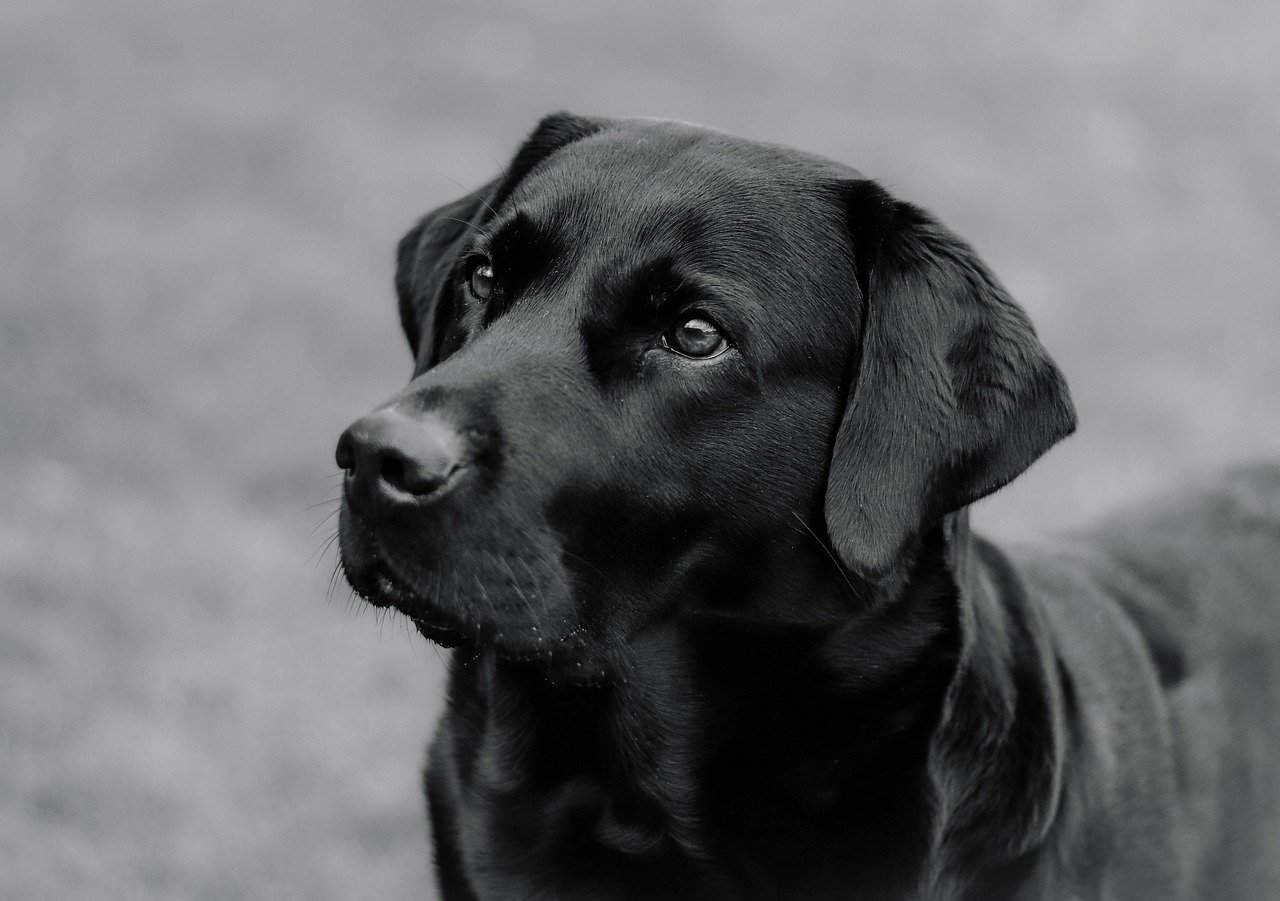
Diagnostic Procedures
When your furry friend swallows a foreign object, acting quickly is essential, but understanding the diagnostic procedures that follow is equally important. After you've assessed the situation and sought veterinary help, the vet will likely perform a series of diagnostic tests to determine the exact nature and location of the object. This is crucial because it influences the treatment plan and helps prevent any potential complications.
One of the most common diagnostic tools used is the X-ray. This imaging technique allows veterinarians to see inside your pet's body without any invasive procedures. X-rays are particularly effective for identifying dense objects, such as bones or metal, but they may not always reveal softer materials, like fabric or rubber. If the X-ray doesn't provide clear information, your vet might recommend an ultrasound. This method uses sound waves to create images of the internal organs and can be especially helpful in visualizing objects that are not easily seen on X-rays.
In some cases, the veterinarian may need to perform an endoscopy. This procedure involves inserting a flexible tube with a camera into your pet's digestive tract to directly visualize the foreign object. Endoscopy can also allow the vet to retrieve the object without the need for surgery, which is a huge plus for both you and your pet!
It’s worth mentioning that before any diagnostic procedure, your veterinarian will likely conduct a thorough physical examination. This examination helps assess your pet's overall health and can provide important clues about the type of foreign object ingested. The vet will check for symptoms such as:
- Abdominal pain or swelling
- Difficulty breathing
- Excessive drooling
- Signs of distress or discomfort
Once the diagnostic procedures are completed, the vet will discuss the findings with you. Understanding the results can be overwhelming, but don't hesitate to ask questions. It's your pet's health on the line, and you have every right to be informed. Knowing what to expect can help you feel more prepared as you navigate your pet's recovery.
In summary, diagnostic procedures are a vital part of addressing the ingestion of foreign objects in pets. From X-rays to endoscopy, these methods help ensure that your pet receives the appropriate care. Always remember, the sooner you seek help, the better the outcome for your beloved companion!
Q: How long does it take for diagnostic procedures to be completed?
A: The time varies depending on the tests performed. X-rays can be done quickly, often in under an hour, while endoscopy may take longer due to the preparation and recovery time involved.
Q: Will my pet need to be sedated for these procedures?
A: In many cases, yes. Sedation helps keep your pet calm and still during the tests, ensuring accurate results and a smoother experience.
Q: Are there risks associated with these diagnostic procedures?
A: While generally safe, any procedure carries some risks. Your veterinarian will discuss these with you before proceeding and will take all necessary precautions to minimize them.
Q: Can I stay with my pet during the diagnostic procedures?
A: Policies vary by clinic, but typically, pet owners are not allowed in the procedure room for safety and cleanliness reasons. However, you can often stay with your pet until they are sedated.
Common Foreign Objects in Pets
As pet owners, it's essential to be aware of the various items that our furry friends might accidentally swallow. Pets, especially curious dogs and cats, often explore their environment with their mouths, leading to the ingestion of foreign objects that can pose serious health risks. Some common culprits include:
- Toys: Small parts from toys, such as squeakers or plastic pieces, can easily be chewed off and swallowed.
- Household Items: Items like socks, string, or rubber bands are often found in playful pets' mouths, potentially leading to blockages.
- Food Packaging: Wrappers, bags, or even foil can attract pets, and if ingested, can cause choking or digestive issues.
- Plants: Certain household plants can be toxic and, if chewed on, may lead to serious health problems.
- Small Objects: Coins, buttons, and small batteries are also common items that pets may find and swallow.
Each of these objects can lead to varying degrees of complications, ranging from mild gastrointestinal upset to severe internal injuries. For instance, a toy that gets lodged in the intestines can cause a blockage, requiring surgical intervention. It's crucial to keep an eye on your pet's behavior and recognize any signs of distress, such as vomiting or lethargy, which may indicate they've ingested something they shouldn't have.
To better illustrate the types of foreign objects that pets may ingest, we've compiled a table below highlighting the common items and their potential risks:
| Foreign Object | Potential Risks |
|---|---|
| Toys | Choking, intestinal blockage |
| Household Items | Gastrointestinal obstruction |
| Food Packaging | Choking, toxicity |
| Plants | Toxicity, digestive upset |
| Small Objects | Choking, internal damage |
By understanding the common foreign objects that pets tend to swallow, you can take proactive measures to safeguard your home. Regularly inspect your pet's toys for wear and tear, keep small items out of reach, and educate yourself about which household plants are safe for your pets. Remember, prevention is always better than cure!
Preventative Measures
When it comes to ensuring the safety of your beloved pet, taking preventative measures is the best strategy. Just like we childproof our homes for little ones, we should also pet-proof our environments. Start by supervising your pet closely, especially during playtime or when they’re exploring new areas. You’d be surprised at how quickly a curious pup can find something to chew on that could be harmful. Think of it as being a lifeguard at a pool—your watchful eye can make all the difference!
Additionally, training your pet to obey commands like “leave it” or “drop it” can be a game changer. These commands not only keep them safe but also foster a strong bond between you and your furry friend. Consider this: teaching your pet commands is like giving them a superhero cape; it empowers them to make better choices!
Another essential aspect is selecting safe toys. Not all toys are created equal, and some can easily break apart or be swallowed. Opt for high-quality, durable toys that are specifically designed for your pet's size and chewing habits. If you're ever in doubt, consult your veterinarian for recommendations. This is akin to choosing the right gear for a sports game; the right equipment can make all the difference in performance and safety.
Finally, create a safe environment by removing any small objects or hazardous materials that your pet could potentially ingest. This includes things like coins, buttons, or even certain household cleaning products. You might think of it as decluttering your space, but with the added focus of keeping your pet safe. Remember, a tidy home is not just visually appealing; it’s also a sanctuary for your furry family member!
Q: What should I do if I see my pet chewing on something they shouldn’t?
A: Stay calm and try to distract them with a toy or command them to drop it. If they refuse and you suspect it’s harmful, consult your veterinarian immediately.
Q: Are there specific toys that are safer for pets?
A: Yes! Look for toys made from durable materials that are appropriate for your pet's size. Avoid toys with small parts that could be chewed off and swallowed.
Q: How can I train my pet to avoid swallowing foreign objects?
A: Consistent training using commands like “leave it” and “drop it” can help. Reward them when they obey, reinforcing positive behavior.
Q: Should I take my pet to the vet for a routine check-up?
A: Absolutely! Regular veterinary visits can help catch potential issues before they become serious, and your vet can provide tailored advice on keeping your pet safe.
Frequently Asked Questions
- What should I do if my pet swallows a foreign object?
If you suspect your pet has swallowed something they shouldn't have, the first step is to stay calm. Observe your pet for any signs of distress, such as vomiting, lethargy, or changes in appetite. It’s crucial to assess the situation before taking action. If your pet shows severe symptoms, contact your veterinarian immediately.
- How can I tell if my pet has ingested a foreign object?
Look for symptoms like vomiting, excessive drooling, loss of appetite, or unusual behavior. If your pet is acting differently than usual, it could indicate they’ve swallowed something harmful. Monitoring their behavior closely can help you catch any issues early.
- Is it safe to induce vomiting in my pet?
Inducing vomiting can be safe in certain situations, but it’s essential to know when it’s appropriate. If the object is sharp or if your pet has ingested a caustic substance, inducing vomiting can be dangerous. Always consult your veterinarian before attempting to induce vomiting.
- What are the safe methods to induce vomiting in pets?
One common method is using hydrogen peroxide, but the dosage depends on your pet's size and health. Always check with your vet for the correct dosage and procedure. Remember, this should only be done under professional guidance.
- When should I take my pet to the vet?
If your pet shows severe symptoms such as continuous vomiting, difficulty breathing, or signs of pain, seek veterinary care immediately. Even if they seem fine, if you know they’ve ingested something dangerous, it’s better to be safe and get them checked out.
- What diagnostic procedures might my vet use?
Your veterinarian may use X-rays or ultrasounds to locate the foreign object and assess any damage. Understanding these procedures can help you feel more prepared for your vet visit and what to expect during the examination.
- What are some common foreign objects pets swallow?
Pets often ingest items like toys, socks, bones, and household items such as rubber bands or string. Familiarizing yourself with these common objects can help you pet-proof your home and prevent future incidents.
- How can I prevent my pet from swallowing foreign objects?
Preventative measures include training your pet to leave objects alone, supervising them during playtime, and selecting safe toys. Regularly checking your living space for small items that could be ingested is also a smart way to keep your furry friend safe.


